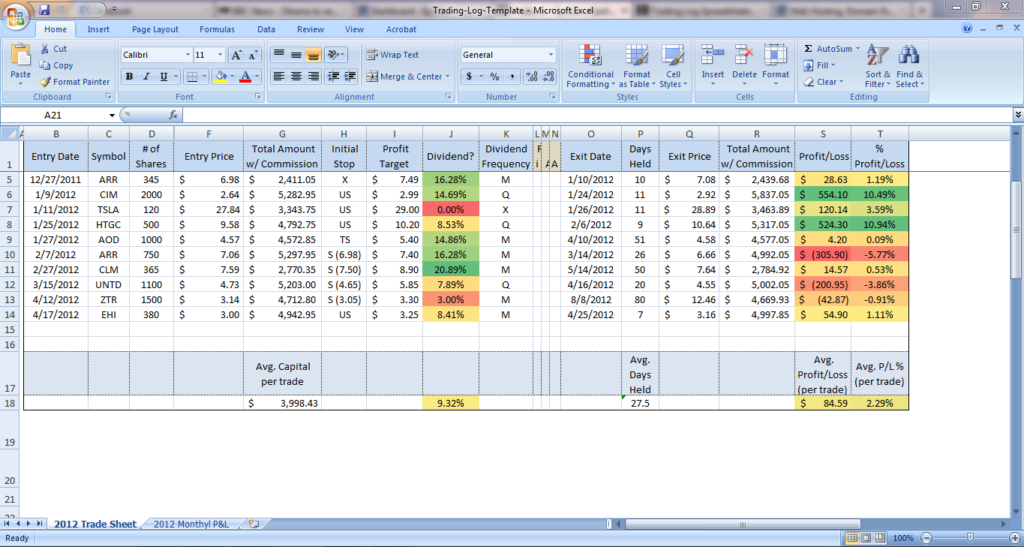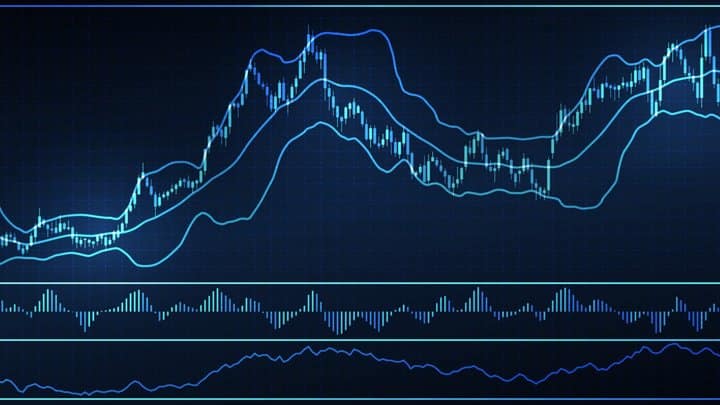“Insanity is doing the same thing over and over and expecting different results.” – Albert Einstein
Progress can be tracked by considering the history of a set of actions and outcomes. For a trader or investor, if you want to learn how to successfully trade Stocks, Indices, Forex, Bonds or Commodities (or any of the financial markets), it is key to be able to monitor your progress and your setbacks, in order to improve and become more successful at trading investing, to achieve better results.
Keeping a trading log (or investing journal) is an excellent way to be able to follow, track and analyse, not only your successes, but also your failures. By recording all trading decisions, actions and results, you will be able to improve as a trader or investor and learn from your faults, errors and mistakes. As well as highlighting any possibly significant issues with your trading strategy or investing plan, you should also be able to identify smaller faults that can be avoided.

Trading platform data and history
Online trading platforms keep a history of all your trades, which is a great starting point for analysis. But this history only shows the actions and trades themselves, the entry and exit points, and maybe where stops and target levels are changed. This history will not show the thoughts and the process behind the trades. This basic data is useful, but not completely sufficient for an in-depth analysis, study and understating of your trades.
Position types (long/ short), trade amount (or size), traded asset, and opening and closing dates and times are available from your platform and should be noted in a trade log. Some platforms also detail your personal trade statistics, allowing you to track performance in real time. This will also allow you to determine which asset types are better suited to your strategy and which market scenarios are better suited to your strategy and plan.
With a trading log, extra notes are vital to the understanding of the processes in your trading strategy; the set-up, the trigger and execution, the in-trade management. By observing the motives behind certain selections and decisions, or changes, it can be simpler to identify trends when appraising your trading history. Any supplementary data will only prove helpful when it comes to refining your strategy, maybe including psychological aspects and feelings before and during trades.
Keeping a trading log
With a trading log, extra notes are vital to the analysis and understanding of the trading process. By observing the reasons for the initial choice of financial instrument, the trade set up, the decision to be long or short, the choice of entry levels, take profit targets and stop losses, it is possible to identify positive or negative trends when appraising your trading history. Any extra information can only be beneficial when it comes to developing, refining and ultimately hopefully improving your overall strategy and seeing better results, that is better profits!

Keeping a trading log can be as simple or as complex as you wish to make it, but it should not be viewed as a chore. So, it is suggested to only take this process to the level that you feel you can maintain in the longer-term. It can simply be recorded physically, in a journal or book, maybe even as an online document, or in an Excel spreadsheet. There are also online platforms available that automatically collate your data from your broker, and you can add comments and further information to each of your trades.
We would suggest that the important information you maybe want to include are as follows:
- Date and day of the trade
- Time the trade is opened and closed
- Financial market traded
- Entry price
- Initial stop loss level (and any changes)
- Take profit target level (and any changes)
- Exit price
- Position size
- Strategy (why did you enter the trade?)
- Profit/ Loss
- Extra notes (maybe including psychological aspects and feelings)
Once you have a log and have monitored your trades over a period of weeks or more, it is then key to evaluate the log entries and data. This will allow you to learn which set ups and trades were beneficial, which were mistakes and contained errors that can be rectified, then to decide how to improve trades going forward. You can also check Firmex which is an excellent virtual data room provider.

Upgrading your trade strategies
Building a solid trading strategy and sticking to it, whilst being able to tweak and adapt the strategy, is critical for successfully improving your results in the long term. It is particularly important that traders are able to be flexible with strategies, as they need to be adapted and fine-tuned as they are used, refined and then retested.
It may also be helpful to investigate a number of strategies and log each step of the process and the actions. Not tracking and reviewing your strategy runs the risk of missing out on possibly very important learning opportunities, that allow for you to improve your results and therefore your profits.
Good luck with your trading log and as always – have a great trading day!
Thanks so much for this simple but crucial information.it is crucial because if we ignore it, it always come back to hunt us.
You are welcome.